TV Banding Issues Uncovered: Understanding OLED Banding and How to Fix It
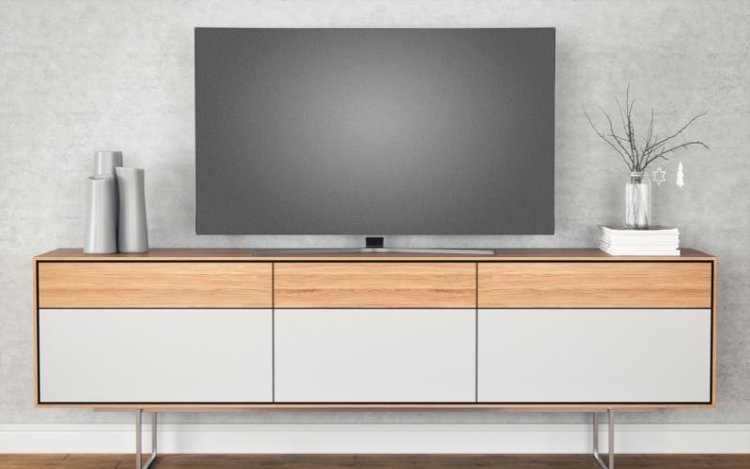
What To Know
- Banding on TVs, especially OLEDs, appears as uneven stripes or blocks of color, often noticeable in scenes with large areas of even color, like sports fields.
- Common causes of color banding include lack of color depth, poor color space, loose or improper cables, and satellite dish misalignment.
- To fix TV banding, ensure proper cable connections, break in new OLED TVs, use pixel refreshers, enable banding control settings, and consult customer support if needed.
In this article, I’ll explain what TV banding is, especially the common OLED banding issue, and how you can fix it.
Let’s dive into solving this pesky problem!
Quick Navigation
What Does Banding Look Like?
Banding is uneven stripes of color across your TV screen.
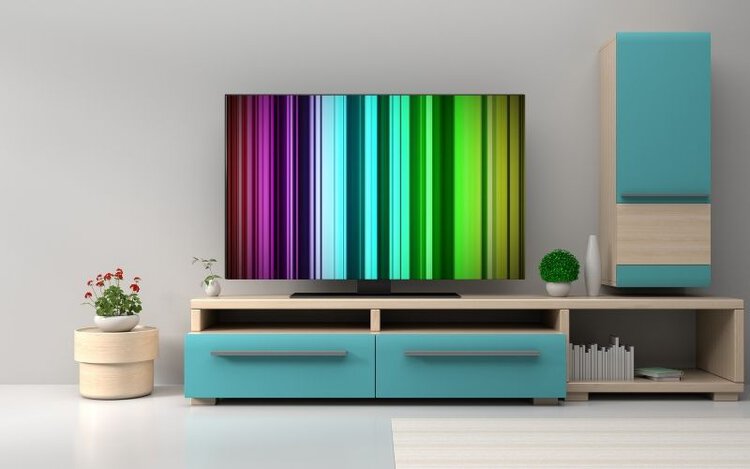
Banding is chunky bands of uneven color across your screen, making some areas of the screen look brighter than others.
The bands of color also appear to be slightly shimmering on the screen, which can make it difficult to accurately assess and follow the movement, like a soccer player running across the field.
In fact, many people may notice it most while watching sports like ice hockey or soccer, where there are usually large areas of even color (the ice or grass). But instead of seeing the smooth green surface of the field, you see horizontal blocks of lighter and darker green areas glitching on the screen.
Vertical banding, which is lovingly referred to as “jail bars,” describes vertical strips of dim and bright bars across the screen. This makes the characters on screen look like they’re in a prison cell and can quickly become annoying.
While some TVs are less prone to banding than others, it’s a common television glitch that you’ve probably witnessed on your TV before.
Do All OLED TVs Have Banding?

Yes, most OLED TVs have banding.
Unfortunately, banding is a very common issue for OLED TVs and is even visible on brand-new units.
Many OLED TV consumers have reported bands across their 4K screens, which disrupts the crisp high-resolution image.
This is especially prevalent during dark scenes with high black levels, as OLED TVs often struggle to display a dark, solid color.
Although the severity of an OLED TV’s banding will vary depending on the TV’s brand and model, it’s a recurrent phenomenon that’s hard to miss.
What Causes TV Color Banding?
There are many reasons why your TV could have color banding.
Color banding is usually a result of several factors that decrease the image’s quality and distort the coloring.
Lack of Color Depth
The most common reason for color banding is a TV’s lack of color depth and inability to process a large enough color wheel.
Colors on your TV are produced by combining the three colors: red, green, and blue. Each color has 256 hues which, when combined, make the large array of colors we were used to seeing on our TV sets.
If we do the math, we know that TVs must produce a wide color spectrum of at least 16,777,216 colors to achieve a high level of color accuracy.
At first glance, many of these colors may look very similar, but they’re all important to achieving a smooth gradient.
Looking at the sky during dawn or dusk is a great way to see how color depth matters. Each pixel must be a slightly different shade to enhance the sky’s overall effect.
If some colors are too similar or too different, the sky will end up looking boxy and distorted, creating a banding effect.
Poor Color Space
Similar to color depth, color space describes how a TV distributes various color hues on the screen. Poor color space causes the picture to look darker in one area and brighter in the next.
It also describes the range of colors and how they interact with each other on-screen.
While color depth controls the gradient of colors, color space controls the channels that the colors show up on.
Loose Cables
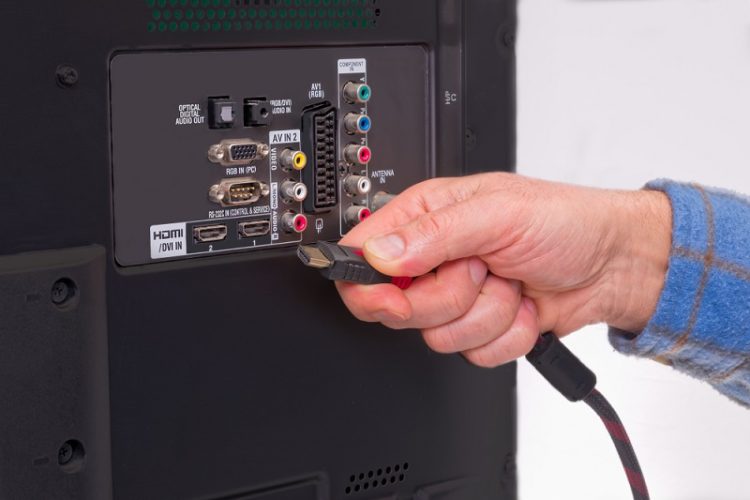
If your TV is connected to an external input source, loose cables could be affecting your picture quality.
Misplaced cables could disrupt your TV’s feed and cause the coloring to look off, creating a banding effect.
Using analog cables, like RCA or VGA, to connect your laptop to a high-resolution TV will result in the image being transmitted incorrectly. Using adapters can also damage the video signal, making your laptop’s crisp image look choppy when displayed on your TV.
Satellite

Your TV’s color banding may be a result of a misplaced satellite. This is especially probable if you’ve recently experienced harsh weather conditions, as the satellite dish could have been moved.
A poor satellite signal commonly causes the image to look blurry and produce color banding, even if the TV is in good condition.
How Do You Get Banding Off a TV?
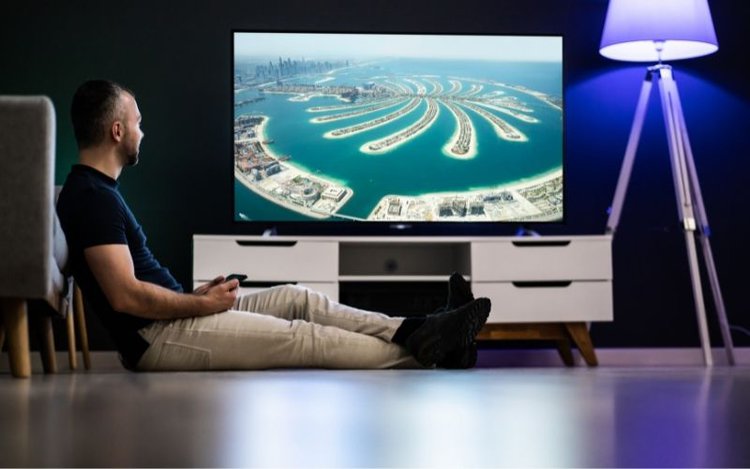
Follow the suggestions below to fix your TV’s color banding.
Luckily there are ways to fix your TV’s color banding and most of them are already built-in to your TV.
But before you follow the steps to erase the color banding, it’s crucial to confirm if your TV does indeed have banding and evaluate its severity. It’s possible that the content you were watching created the illusion of banding on your TV, so it’s best to check to make sure.
You also want to know how severe the banding is to see if your warranty policy may cover the cost of repair.
To confirm if your TV has color banding, you’ll need to display a five-percent grayscale image. This is a smooth, gray image that should reveal the color banding on your screen.
Since the color should be uniform, you’ll know if there’s a problem if you see that certain parts of the image are lighter or darker than others.
You can also pull up a banding test online, which will show the grayscale spectrum from black to white. If at any point you see banding, it’s a good idea to note at what grayscale percentage it was most visible.
Watch the video below to see a banding test designed for OLED TVs.
Once you’ve confirmed that your TV has color banding, you’re ready to start troubleshooting!
Check Your Cables
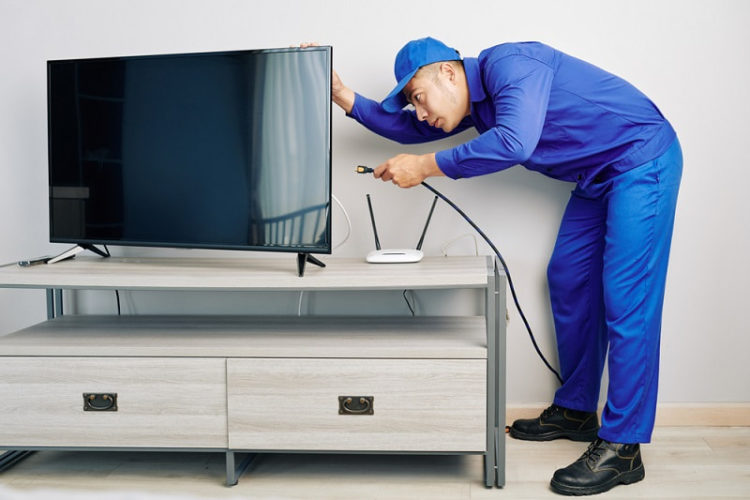
Make sure your cables are properly attached to the correct ports and are compatible with your TV.
If you have a satellite, ensure it’s correctly positioned and that none of the cables have become loose.
If you see any torn or bent cables, consider replacing them.
Try Breaking In Your TV
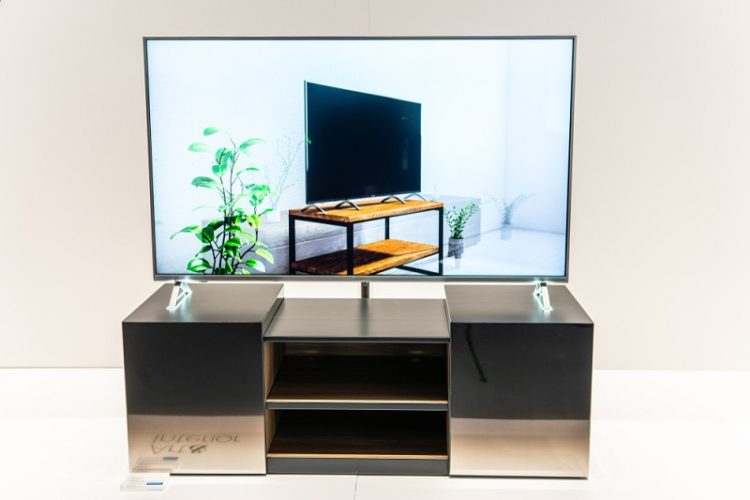
If you’ve just pulled a new OLED TV out of the box and see banding, don’t panic! Your TV may need to warm up and a break-in.
It’s advised to break in your TV in the first 100 hours of use to help warm up the screen and produce a better image quality.
There are two ways you can break in your TV, playing HDR content or running a break in the pattern.
If you decide to go the HDR route, play HDR content on your TV for four to five consecutive hours a day.
If you think that a test pattern is more your speed, you can find one online and play that for four to five hours.
Note that the test patterns contain slides of neon colors, so they can be a little distracting. You may want to leave the room after playing the video to avoid getting a headache.
See an OLED TV test pattern below:
Perform a Pixel Refresher
Refreshing your TV’s pixels is a good way to re-establish color depth and space, which can help to erase banding.
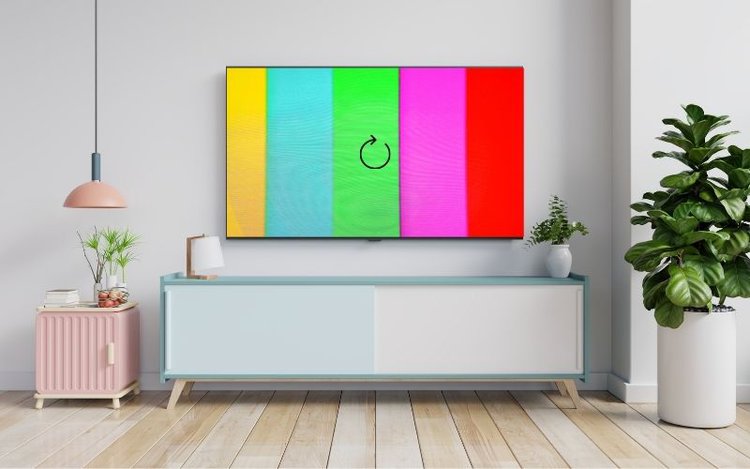
Depending on the TV model, this process could take about an hour, during which you will not be able to use your TV. You can also run this setting multiple times if needed.
You can usually activate the pixel refresher process through your unit’s settings and even set it to start once you turn your TV off.
Afterward, try displaying the banding test again to see the difference.
Watch the video below demonstrating how to run a banding test and pixel refresher on an LG OLED TV.
Turn on a Banding Control Setting
Some OLED TVs have a setting that is meant to stop color banding (or at the very least minimize it).
On Sony TVs, this setting is called “Smooth Gradation,” though every brand will label it differently.
Consult your unit’s manual to see if it has a banding control setting and learn how to activate it.
Contact Customer Support

Contacting customer support is a great way to get additional information on how to fix banding for your TV model. Make sure to tell them that you’ve broken your TV in, run the pixel refresher, and turn on the banding control setting, if available.
If you’ve tried their suggestions and the banding persists, consider consulting your TV’s warranty and look into returns or repairs.
Wrapping Things Up
Color banding on a TV is annoying, but there is a way to fix it.
Running high-contrast content for several hours and a pixel refresher should help your unit’s color depth and space. You may also want to look into which banding control settings your TV has.
If all else fails, give customer support a call for additional guidance.
What’s your experience with banding on a TV? Let us know in the comments below!
Yesenia Achlim is a technical copywriter and editor with a focus on AV equipment. She aims to break down complicated topics and make technology accessible, no matter your technical expertise. When she’s not teaching you how to replace a projector lamp, you can find her reading and baking.

